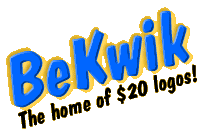
![]()
Virtually
Free Logo Design
Logo Samples
Low
Cost Logos FAQ
Why Low Cost Logos?
Testimonials
![]()
Virtually
FREE Logo Design!
Includes
E-book: How to Create Fortune
on the Internet with 4 Simple Steps
worth $37
Get
it when you order a logo from us! ![]()
FREE
Report: How to Create Brand Awareness without
Mass Advertising
Get it FREE when you subscribe to our cutting edge newsletter "Brand your Business" below!
![]()
Logo
Design Articles
Branding Articles
Marketing
Articles
Design Articles
Printing
Articles
Logo Design Software
Logo
design Books![]()
Order
NOW - We accept: ![]() .
.
![]() .
.![]()
![]() .
.
![]() .
. ![]()
|
|
What Killed the Banner Ad?If you ask the Internet marketers of today, many if not most of them will tell you that banner advertising is dead. They say that it's expensive, the click-through rates are low and that unless you know exactly what you're doing, it is likely that you'll end up spending more money than you'll make. Surprisingly, just a few years ago the same people were rushing to invest their money in banner advertising campaigns. In those happy days, the click-through rates were at least ten times as high as they are now. What has happened? Has the audience become more resistant to Internet advertising in general? Or perhaps the whole concept of banner advertising has become obsolete and we'll need to think of new ways of reaching people? Perhaps, perhaps. There is certainly at least some truth to these claims, but they are hardly the only reasons behind the current crisis. Personally, I think that those responsible for planning the banner advertising campaigns are largely to blame for what has happened. The difference between the successful banner advertising of yesterday and the pathetic banner advertising of today is vanity. Vanity? Sounds odd, but you'll only need to look at the banners displayed on a few popular sites to see what I mean. They have a nice-looking background, a beautiful picture or two, a professionally-designed logo, smooth animation and bright, pleasant colors. In a nutshell, those banners are works of art and that is exactly why they perform so badly. More
marketing, less graphics Some readers may be worried that such an approach might damage their reputation in the eyes of the consumers. Unless the ads look good, they might affect the company's brand negatively. Large, well-known businesses definitely should worry about that, but if you're a small business, you shouldn't over-emphasise the importance of branding. You've probably seen hundreds or thousands banners in the past weeks, but can you remember what even twenty of them looked like and what company or product they were advertising? Without any further ado, here are some tips on how to make your banners look worse but perform better: Don't
camoflague your banners In practice, this goal can be achieved by utilizing Windows-style navigational elements, notes instructing users to "click here" and colors that contrast with those used on the site. The result won't look like something you'd want to frame and hang on your wall, but it will be effective. Easy
with the graphics A good rule of thumb is that unless the picture is somehow essential in convincing the user to click, drop it. When advertising a sweepstakes, adding a picture of a pile of cash can feel like a good idea. However, in many cases a text screaming "WIN $10.000" would be just as effective and would load up much, much faster. Cut
to the chase Following these instructions, which essentially tell you to create banners that look simple and perhaps even a bit unprofessional might seem foolish. But simple, straight-forward banners that stand out get clicked on. Banner advertising is not a beauty contest. It's a selling contest. At the end of the day, what matters is whether your banners helped you make a profit, not how cool they looked. Lauri Harpf runs the A Promotion Guide website, where he offers free tips on how you can use banners, search engines and other methods to promote your site. His site can be found at http://www.apromotionguide.com |